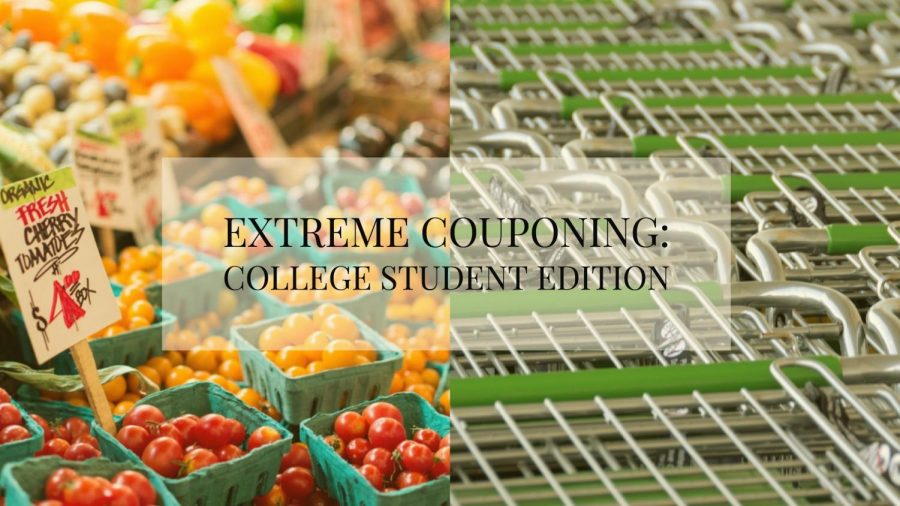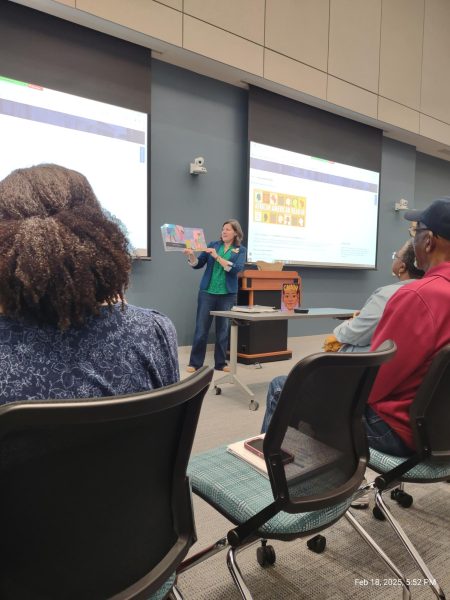Extreme couponing: college student edition
As a college student, I am always looking for ways to save money. I work three jobs, budget my monthly earnings and join rewards programs to stores I shop at frequently. However, one cost-cutting tactic that I know could save me money, but don’t normally take the time to explore is couponing.
Extreme couponing is a practice that I believed only existed among middle-aged mothers on TLC. However, after my week as a coupon-cutting modern woman, I now know that anyone can save money this way.
Research
To start on this journey, I decided to do some research on where I could find coupons to use on products I would normally buy. I chose to do my grocery shopping at Harris Teeter because I am already a member of their VIC Card Rewards Program. This is a membership you can set up at Harris Teeter for free (although most grocery store chains have some sort of program like this) where you can get exclusive deals and sales available only for VIC Card holders.
One thing to do before clipping your coupons is to look up the policy of the store you are planning on shopping at. Some grocery chains are stricter about what kinds of coupons they allow than others, so make sure you know your store’s rules and regulations.
The best coupon sources I found were Coupons.com, Red Plum and the Sunday newspaper coupon inserts. On top of these three, I also picked up a copy of the weekly VIC Card deals from Harris Teeter to factor into my shopping trip. I printed five coupons from coupons.com, one from Red Plum and cut three from the Sunday paper. I also planned on using eight VIC Card deals from the weekly catalog.
Shopping
As I was shopping around, I noticed that some of the products I had coupons for were not on the shelves. I had to discard some of the coupons I had printed out and find similar products that had VIC Card deals. I changed my strategy a little and began to think in terms of how many VIC Card deals I could find and took on the challenge of attempting to not purchase anything full price.
All in all, I purchased 11 items. Some of them were things that I would purchase normally and have used in the past, but some of them were items that I only got because they peaked my interest and they were on sale.
My total before coupons was $40.15. I used three of my coupons and eight VIC Card deals to save a total of $10.99, which amounted to 28% total savings.
Final Thoughts
Couponing is a strategic way to save money on the things you spend money on every day. This experience showed me that taking a little extra time and planning when making your grocery shopping list can go a long way. However, the process can be tedious and require sacrifice in terms of what’s on sale and what brands are available. These are the main pros and cons I came up with after my week-long journey.
Pros
- It can definitely save you money! Almost a third of my purchase was savings and that was only after one week of research and scouring online and in the newspaper. For my first time, I think the benefits were relatively significant.
- Coupons and deals update regularly, so if you don’t see a brand or product that you want to purchase that has a coupon available, just check back in a few days and most websites will have new ones continuously rolling in. I printed a few of my coupons from coupons.com at the beginning of the week and checked back the day of my shopping trip to find that the website had been updated with new coupons.
- The whole process opened me up to products I wouldn’t normally try. Since not all the products I normally buy were available as coupons, I had to find other brands and substitutes to try out. Many people don’t want to waste money on something they’re not sure they’ll like, but since I was getting it for a discounted price anyway, I didn’t mind as much.
Cons
- Although coupons update frequently, it takes a certain level of dedication and time that many college students simply don’t have. When you just want to make a Walmart run on a Friday afternoon after your 3 p.m. lecture lets out and get back to campus before your 6 p.m. meeting, you don’t have time to worry about cutting coupons or checking for deals.
- The coupons that aren’t for a specific store typically come straight from the manufacturer and can be used in any store that sells their products. However, the store you’re shopping at may not have the same products as the manufacturer’s coupons, so that requires extra research before you shop.
I have two main recommendations for anyone starting as a beginning couponer.
First, sign up for a rewards program at a store you like and frequent often and pay the most attention to their weekly deals and exclusive member discounts. This is the way I often save money while grocery shopping and how I saved much of my money during this shopping trip.
Second, be patient when looking for coupons and only print the ones you know you’ll need or you genuinely want to try. If you’re bringing them to the store solely for the sake of buying things to save money, it defeats the purpose of couponing.
Overall, the experience showed me that saving money through couponing is possible, even for a busy college student, and I would advise not only my peers, but anyone looking for ways to save money to try it out for themselves. And to all the binder-toting soccer moms out there who make extreme couponing your life, I salute you. I hope to do you all proud, one coupon at a time.













Jeff • Mar 28, 2018 at 7:38 am
Hi,
Great article. You mentioned, “Coupons and deals update regularly, so if you don’t see a brand or product that you want to purchase that has a coupon available, just check back in a few days and most websites will have new ones continuously rolling in.”
In fact there are over 500 different sites where you can find unique coupons to print, and those are all changing frequently. The Pro is that there is a ton of available savings, the Con is that it can take a lot of time.
Our site, LOZO.com, does the work for you, listing coupons from all of those sites in one place, and sending you alerts when new ones come in that match your shopping list. We are a free service, and hope we can save you and your fellow students some money!
Thanks,
Jeff Kaplan
LOZO.com